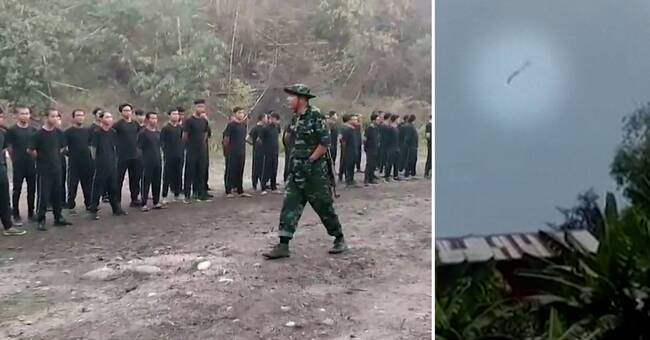What we see in Myanmar can be described as an escalating version of the conflict that has been going on in the country for decades.
Ever since the 1940s, armed groups, often linked to Myanmar's many ethnic minorities, have fought for self-determination and democracy.
The groups, which are often active in border areas in the eastern and northern parts of the country, are often well-organized and in some regions function almost as their own state apparatus for the population.
- Although they are not completely spotless, they have offered well-developed systems for administration and administration of justice, and in many cases are the most legitimate actors for the civilian population in the ethnic minority areas, says Kristina Simion, specialist at Folke Bernadotte Academy and Myanmar researcher.
Even before the military coup in February, the situation between the military and the armed groups was tense, although the now imprisoned leader Aung San Suu Kyi on several occasions tried to mediate peace.
But after the coup, the situation has worsened, not least after many armed groups expressed their support for the protest movement and helped hide activists.
- This has of course upset the military, which then went on the offensive in these areas with escalating violence in response from both sides.
Thousands fly
It is not uncommon for the civilian population to fall victim to military attacks and the fighting has led to thousands of rural residents choosing to flee to neighboring Thailand.
At the same time, others choose to flee to the border areas that are affected.
- Many demonstrators have taken refuge in the ethnic minority areas in a similar way as they have done after previous protests.
There is a large influx of people, there is a lack of food, water and supplies, says Simion.
How the situation will develop in the future remains to be seen, but according to Kristina Simion, it is likely that the violence will continue to escalate.
- Another scenario that is possible is that the protest movement continues to be silenced and eventually tired out under military force.
In the best of worlds, the protest movement would receive continued support from the outside world and be able to receive resources to continue the general strike, and the country's democratically elected leaders would receive support and a mandate to govern the country.
But as the situation is today, it is very difficult to see what the development will look like, she says.
A video from Reuters shows how one of the junta's helicopters was shot down by an armed group. See more in the video player above.

